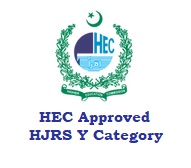GNSS-and-GIS based android integration of mobile based virtual guide application ExpLahore for walled city Lahore, Pakistan
DOI:
https://doi.org/10.47264/idea.nasij/2.1.2Keywords:
Global Navigation Satellite Systems (GNSS), Geographic Information System (GIS), Global Positioning Service (GPS), Geo tagging, Android, Tourism, PakistanAbstract
The expansion of technology by utilizing Global Navigation Satellite Systems (GNSS) integrated with Geographic Information System (GIS) has made life much easier and handy. Global interactions have given birth to tourism and intra-culture programs. Many foreigners as well as local tourists prefer to explore the sites on their own instead of a guide, this is quite adventurous but can be tedious too and brings along a lot of security risks. This research is based on design and development of an android application considering “Walled City, Lahore, Pakistan”. The application will help tourist geotag their information. This application has been developed with the fact to provide precise position through GNSS, the coordinates have been refined using ArcGIS and QGIS and placed in application using Android Studio and Adobe Illustrator. GIS allowed creating interactive queries, analyzing spatial information and map creation, shape file extraction and 99% precise coordinates than maps we use. In travelling world, geotagging is a great and trending feature that allows user to share their exact position. The application will locate user’s coordinates (Latitude and Longitude), current satellite count, precision, altitude, time and day. The guidance application helps user find the correct possible route to the monuments of walled City, Lahore. Information and precise location of 14 place groups of Lahore city, as well as precise route to them is also a feature of the application.
References
Atunggal, D., Ausi, N. H., Ma'ruf, B., & Rokhmana, C. A. (2017). Application of Low Cost RTK GPS Module for Precise Geotagging using Smartphone. Jakarta, SN, 89-92.
Chang, S., & Lee, Y. T. (2015). A consumer synchronizer for T-DMB receiver based on cooperative communications in emergency alert systems. IEEE Transactions on Consumer Electronics, 61(4), 411-419. https://doi.org/10.1109/TCE.2015.7389794
Cheng, J. S., Hsiang, H. W., & Wu, W. C. (2010, December). The design of intelligent mobile tourism service system. In 2010 International Computer Symposium (ICS2010) (pp. 813-817). IEEE.
Dar, N. A., & Khan, A. A. (2013). A system to track android devices: An implementation of lbs, location manager, services and web-services in android. International Journal of Mathematics & Computing System, 4(1), 49-54.
Fatima, R., Zarrin, I., Qadeer, M. A., & Umar, M. S. (2016, July). Mobile travel guide using image recognition and GPS/Geo tagging: A smart way to travel. In Thirteenth International Conference on Wireless and Optical Communications Networks (WOCN) (pp. 1-5). IEEE. https://doi.org/10.1109/WOCN.2016.7759893
Ge, J., Wang, F., & Deng, H. (2013, November). An Investigation on GIS Technology for Android Embedded System. In 6th International Conference on Intelligent Networks and Intelligent Systems (ICINIS) (pp. 312-315). IEEE. https://doi.org/10.1109/ICINIS.2013.87
Hardy, A., Hyslop, S., Booth, K., Robards, B., Aryal, J., Gretzel, U., & Eccleston, R. (2017). Tracking tourists’ travel with smartphone-based GPS technology: A methodological discussion. Information Technology & Tourism, 17(3), 255-274. https://link.springer.com/article/10.1007/s40558-017-0086-3
Hu, S. Y., Wey, T. S., Lin, M. H., & Hu, N. T. (2011, December). A simplified design of the embedded e-call system using GPS. In second international conference on innovations in bio-inspired computing and applications (pp. 237-240). IEEE.
Kuzma, J. M. (2012). Children and geotagged images: Quantitative analysis for security risk assessment. International Journal of Electronic Security and Digital Forensics, 4(1), 54-64. https://doi.org/10.1504/IJESDF.2012.045390
Maryam, A., Siddiqui, N., Qadeer, M. A., & Umar, M. S. (2016, July). Travel management system using GPS & geo tagging on Android platform. In Thirteenth International Conference on Wireless and Optical Communications Networks (WOCN) (pp. 1-6). IEEE. https://doi.org/10.1109/WOCN.2016.7759019
Oku, K., Ueno, K., & Hattori, F. (2014, August). Mapping geotagged tweets to tourist spots for recommender systems. In 2014 IIAI 3rd International Conference on Advanced Applied Informatics (pp. 789-794). IEEE.
Sahu, I., & Chakraborty, I. (2013). Understanding Location Manager in Android and Implementing an Optimal Image Geotagging Application. International Journal of Computer Trends and Technology (IJCTT), 4(6), 1682-1686. http://ijcttjournal.org/archives/ijctt-v4i6p129
Saranya, M., & Nithya, K. (2015). Campus Navigation and Identifying Current Location through Android Device to Guide Blind People. International Research Journal of Engineering and Technologi (IRJET), 2(8), 1339-1343. https://www.irjet.net/archives/V2/i8/IRJET-V2I8202.pdf
Schindler, G., Krishnamurthy, P., Lublinerman, R., Liu, Y., & Dellaert, F. (2008, June). Detecting and matching repeated patterns for automatic geo-tagging in urban environments. In IEEE Conference on Computer Vision and Pattern Recognition (pp. 1-7). IEEE. https://doi.org/10.1109/CVPR.2008.4587461
Tiwari, S. K., Varshney, G. K., Qadeer, M. A., & Umar, M. S. (2016, July). JustQuick: Intelligent LBS using Android with GPS and geo-tagging applications. In 2nd International Conference on Applied and Theoretical Computing and Communication Technology (iCATccT) (pp. 820-824). IEEE. https://doi.org/10.1109/ICATCCT.2016.7912113
Tobing, R. D. H. (2015, August). Mobile tourism application for Samosir Regency on Android platform. In International Symposium on Technology Management and Emerging Technologies (ISTMET) (pp. 249-253). IEEE. https://doi.org/10.1109/ISTMET.2015.7359038
Whipple, J., Arensman, W., & Boler, M. S. (2009, October). A public safety application of GPS-enabled smartphones and the android operating system. In 2009 IEEE International Conference on Systems, Man and Cybernetics (pp. 2059-2061). IEEE.
Downloads
Published
How to Cite
Issue
Section
License
Copyright (c) 2021 Aaysha Rahim, Najam Abbas Naqvi

This work is licensed under a Creative Commons Attribution-NonCommercial 4.0 International License.
Please click here for details about the Licensing and Copyright policies of NASIJ.












